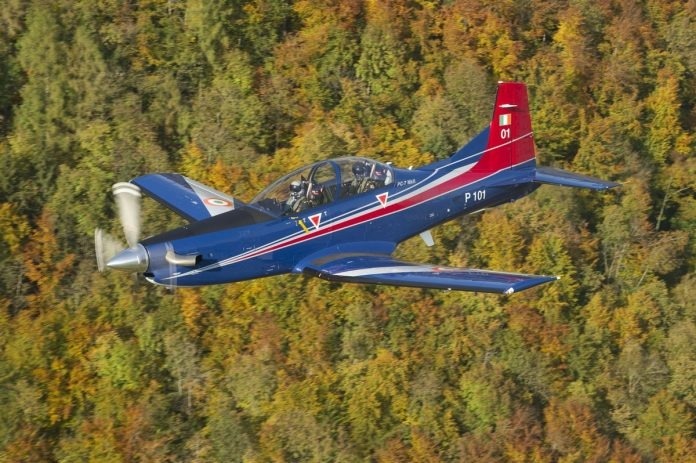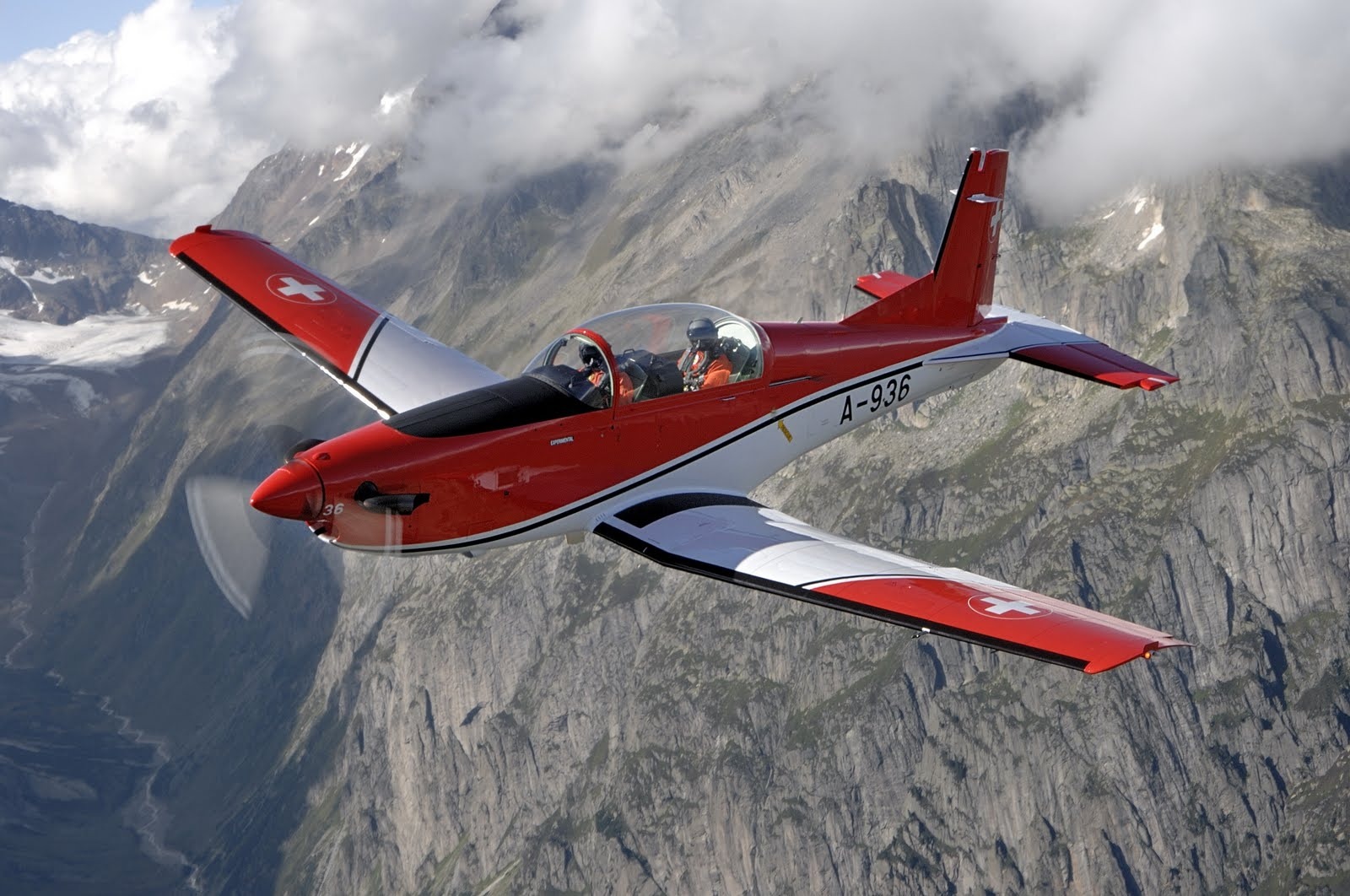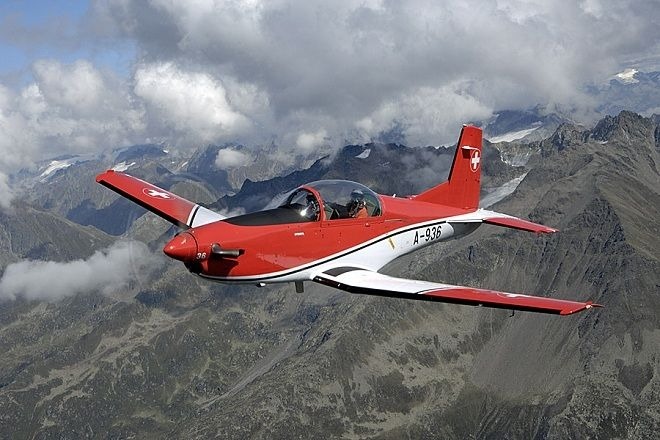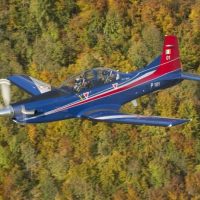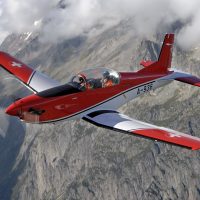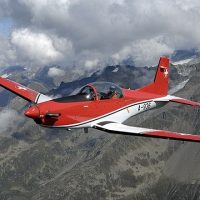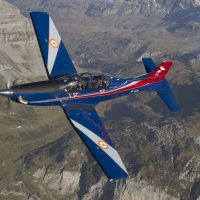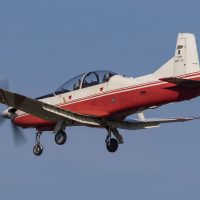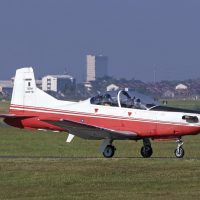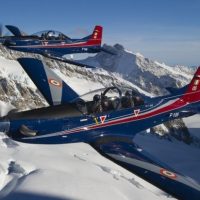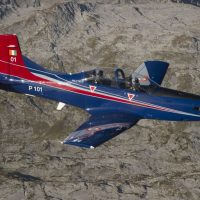Pilatus PC-7 MkII Specs, Price, Pictures, & Details. Pilatus PC-7 MkII is a turboprop-engined basic coach aircraft manufactured by Pilatus Aircraft of Switzerland. This aircraft is intended for ab initio training (from the start) and basic flight training for beginner pilots. It provides reliable and cost-effective training solutions for the world flying force. This aircraft has been operated by the South African Aviation Service (SAAF), Indian Aviation Service (IAF), Botswana Defense Force (BDF), Royal Malaysian Flying Force and Royal Brunei Aviation Service. More than 160 PC-7 MkII aircraft have been sold since it was introduced in 1994.
Pilatus PC-7 MkII Engine and Performance
Pilatus PC-7 MkII is powered by Pratt & Whitney PT6A-25C single turboprop engine. The engine produces a maximum output power of a maximum power of 700 shp to drive the four-bladed Hartzell aluminum propeller. This engine offers lower operating costs than the PT6A-25A engine on a standard PC-7 aircraft. It was also equipped with a digital electronic engine control system.
PC-7 MkII aircraft can fly with a cruise speed of 448 km/ h at sea level and a maximum operating speed of 556 km/ h. The aircraft can ride at speeds of 14.79 m/ s. The maximum range and maximum height of the aircraft are 1,500 km and 33,000 ft, respectively. The aircraft’s takeoff and landing distances above the 15m obstacle to sea level are 457 m and 687 m, respectively. The maximum limit for certified g-loads from aircraft is + 7 g/ -3.5 g.
Pilatus PC-7 MkII Specs
The PC-7 MkII aircraft was developed based on the advanced PC-9M coach aircraft. It uses the fuselage and avionics of PC-9M. The aircraft has a modular design that allows system integration with minor modifications. Conventional systems used in aircraft ensure easy operation and maintenance. The dimensions of the PC-7 MkII aircraft cover a length of 10.8 m, a height of 3.26 m, and a wing span of 10.19 m and have a wingspan of 16.28 m ². The aircraft’s empty weight is 1,710 kg, while the maximum take-off weight (MTOW) is 2,250 kg.
Pilatus PC-7 MkII Cockpit and Avionics
The PC-7 MkII aircraft is equipped with a glass cockpit that accommodates two crew members with a tandem configuration. The cockpit is equipped with ejection seats and glass canopies that offer unobstructed visibility for both crews. Ergonomically placed instruments, displays and controls make it easy to operate the aircraft at all stages of flight. The tandem layout also allows the instructor to monitor, assist, or override the student pilot’s actions.
The PC-7 MkII avionics suite integrates the main flight display, multifunctional display, electronic flight instrumentation system, distance measuring equipment and automatic direction finder (ADF). This aircraft is also equipped with a communication suite, anti-g system, and oxygen-producing system installed (OBOGS).
Pilatus PC-7 MkII Price and Orders
The price of the latest Pilatus PC-7 MkII basic personal trainer aircraft is around US $ 3.9 million. SAAF became the first customer for the PC-7 MkII when it ordered 60 aircraft in 1993. Shipments ended with the delivery of the final aircraft in 2006. The PC-7 MkII aircraft in the SAAF service was designated the Pilatus Astra, due to the self-built avionics suite.
SAAF signed an arrangement with Pilatus Aircraft in October 2008 to improve the avionics of 35 Astra aircraft under the Ithambo Project. The first two Astra PC-7 MkII aircraft equipped with standard factory-made avionics were sent to SAAF in July 2010. The upgraded Astra aircraft was renamed PC-7 MkII, because it has standard avionics used throughout the world.
In May 2012, Pilatus Aircraft was awarded a $ 523 million deal by the Indian Aviation service to send 75 PC-7 MkII coach aircraft. The deal also includes options for additional aircraft plus an integrated ground-based training system and a logistical support package. The IAF received the first batch of PC-7 MkII aircraft in February 2013 and the remainder was shipped the following year.
